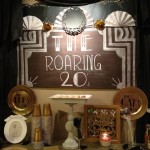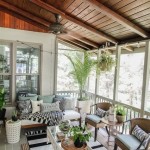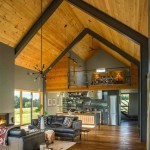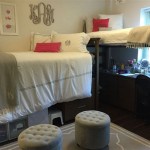How To Decorate a Dining Table When Not In Use
A dining table often serves as the centerpiece of a dining room, and even when not actively used for meals, it can contribute significantly to the overall aesthetic of the space. Decorating a dining table when not in use offers an opportunity to enhance the room's decor and create a welcoming ambiance. This article explores various ways to style a dining table, offering practical tips and inspiring ideas.
One common approach to decorating a dining table is using a centerpiece. Centerpieces provide a focal point and can be tailored to suit different styles and seasons. A classic choice is a vase of fresh flowers or a curated arrangement of dried botanicals. For a more rustic look, a wooden bowl filled with seasonal fruits or vegetables can be an attractive option. Alternatively, a decorative tray holding candles, small sculptures, or other decorative objects can create a stylish centerpiece.
Table runners offer another way to add visual interest and texture to a dining table. These come in a wide range of materials, including linen, cotton, silk, and burlap. The choice of material and pattern can significantly impact the overall style. A natural linen runner complements a minimalist or farmhouse aesthetic, while a richly patterned silk runner can add a touch of elegance to a more formal setting. The runner should be proportionate to the table size, leaving some of the table surface exposed on either side.
Placemats can be used in conjunction with a table runner or on their own to protect the table surface and add a decorative element. Placemats are available in various materials, such as woven straw, bamboo, cork, and fabric. They can be chosen to coordinate with the table runner and other decorative elements in the room. When not using a table runner, individual placemats can delineate place settings, creating a sense of order and anticipation for the next meal.
Decorative objects can further enhance the table setting. These can include small sculptures, decorative bowls, or books. The key is to choose items that complement the overall style and create a cohesive look. Grouping items in odd numbers, such as three or five, often creates a more visually appealing arrangement. Avoid cluttering the table; leave sufficient negative space for a balanced and harmonious look.
Candlesticks and candles can add a warm and inviting ambiance to the dining room. These can be placed directly on the table or on a decorative tray. Choosing candles that complement the color scheme of the room can create a cohesive aesthetic. Unscented candles are generally recommended for dining areas to avoid competing with food aromas. Candleholders can range from simple glass hurricanes to ornate metallic designs, depending on the desired style.
Seasonal decorations offer an opportunity to refresh the dining table's look throughout the year. During the fall season, pumpkins, gourds, and autumn leaves can create a festive display. In the winter, pine cones, evergreen branches, and ornaments can evoke a cozy holiday atmosphere. Springtime calls for fresh flowers, pastel colors, and light, airy decorations. Summertime decorations can include seashells, starfish, and other nautical elements.
Consider the existing decor of the dining room when decorating the table. The table setting should complement the overall style of the room, whether it be modern, traditional, farmhouse, or eclectic. The color palette, materials, and decorative elements should work in harmony with the surrounding furniture and decor. This creates a cohesive and visually pleasing environment.
The size and shape of the dining table also play a crucial role in determining the appropriate decorations. A large rectangular table can accommodate a more elaborate centerpiece and multiple decorative elements. A smaller round table may benefit from a simpler, more compact arrangement. The scale of the decorations should be proportionate to the table size to avoid a cluttered or unbalanced look.
Lighting can significantly impact the overall ambiance of the dining room. A pendant light fixture centered above the table provides ambient lighting and can serve as a focal point. Table lamps placed on a nearby sideboard or console table can offer additional soft lighting. Candles can also contribute to a warm and inviting atmosphere, particularly during evening hours. Layering different light sources creates depth and dimension in the room.
Regularly refreshing the table decorations can prevent the space from feeling stagnant. Changing the centerpiece, table runner, or other decorative elements seasonally or for special occasions can introduce new life and interest to the dining room. This also provides an opportunity to experiment with different styles and incorporate new trends.
Maintaining a clutter-free table surface is essential for a clean and organized look. Avoid overcrowding the table with too many decorative objects. Keep the surface relatively clear to allow for easy dusting and cleaning. This also enhances the visual appeal of the table and the surrounding space.

Star Furniture

How Do You Decorate A Dining Table When Not In Use Nuptio
:strip_icc()/dining-room-table-decor-ideas-1-ashley-montgomery-design-the-nesbit-ef78d3dec9564a2eace6010270f75fa3.png?strip=all)
33 Standout Dining Table Décor Ideas

Beautiful And Easy Dining Room Table Centerpiece Ideas Stonegable

19 Ideas For How To Decorate A Dining Room Table Everyday Hen And Horse Design

Decorating Ideas For A Dining Table When Its Not In Use
:max_bytes(150000):strip_icc()/8vjhlYyQ-fa78b5c1432341bba99390673e31d25c.jpeg?strip=all)
Dining Table Decor Ideas That Aren T Just For Occasions

How To Decorate A Dining Table When It S Not In Use

8 Décor Tips For Your Dining Table Everyday Classic Casual Home

Beautiful And Easy Dining Room Table Centerpiece Ideas Stonegable







